Campus/Town Accessibility
Introduction
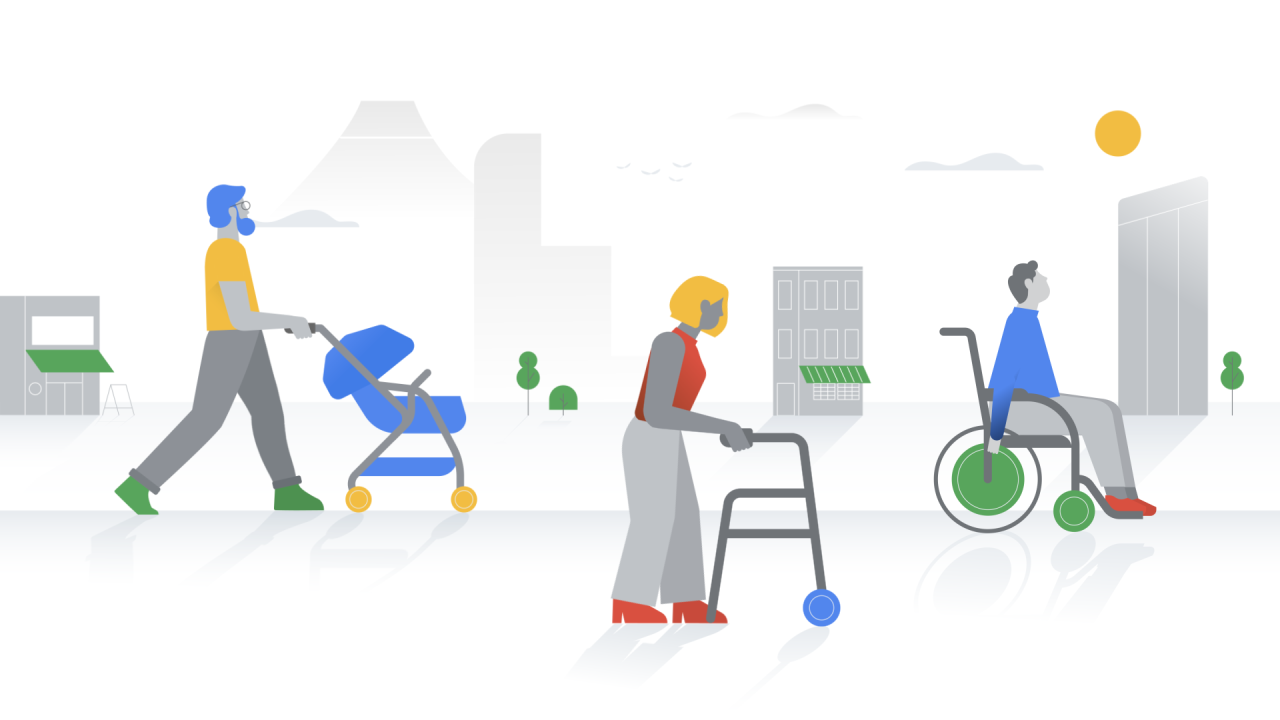
Accessibility design is especially important for users with disability. According to the report by U.S. Census Bureau, nearly 1 in 5 people have a disability in the U.S. And roughly 30.6 million had difficulty walking or climbing stairs or used a wheelchair, cane, crutches, or walker [1]. Hence, the accessibility design for people with mobility impairments is crucial. This assignment is to investigate the accessibility of pathways around town. This work is inspired by the Project Sidewalk, a project that allows volunteers to label the accessibility sidewalks on the interactive virtual map and thus create an accessibility map.
Annotated Map
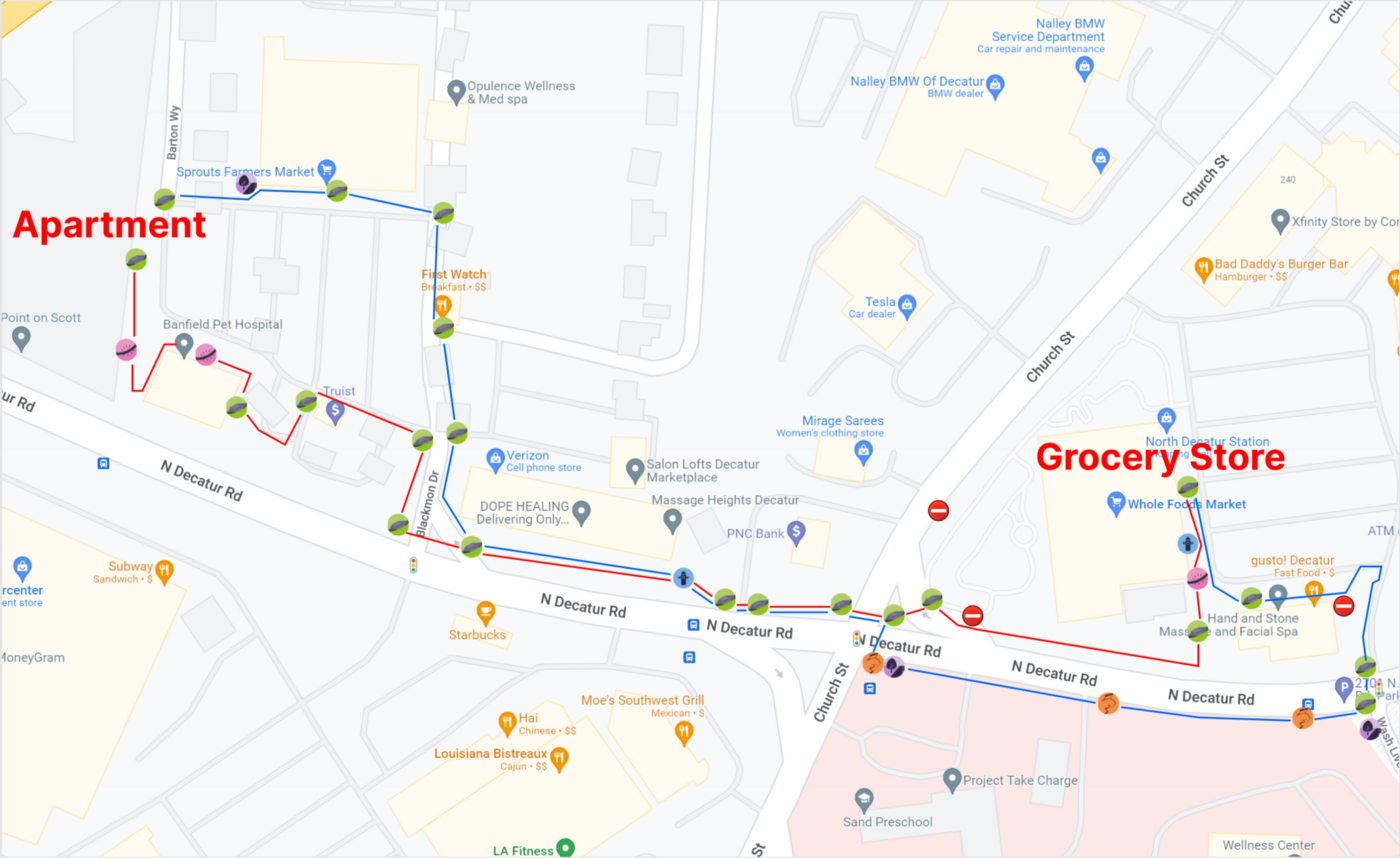
The investigated area I chose is in North Decatur. I assumed myself as a person with mobility impairment and wanted to do grocery shopping at a Whole Foods Market nearby. As shown in the screenshot above, I labeled the map with 6 different icons and routes in 2 different colors.
The route in red shows the route I took from the apartment to the grocery store, while the route in blue gives the path I walked from the grocery store to the apartment building.

The above screenshot presents the 6 icons I used in the annotated map. The first 5 icons are from the Project Sidewalk.
- Curb Ramps: this icon is used when a corner has a curb ramp and it is clearly facing the other side of the street.
- No Ramp: if there is no ramp found at the intersection or from the sidewalk, this label should be used.
- Surface Problem: a surface problem like a bump or crack on the sidewalk would cause uncomfortable experiences for people who are using wheelchairs or other assistive devices.
- No Sidewalk: if there is a missing sidewalk, this icon should be placed there.
- Obstacles A obstacle is any object that is on the path and blocks the path.
- Not Passable: this label means that the road is not passable for people with mobility impairment, usually caused by stairs.
Accessible Options
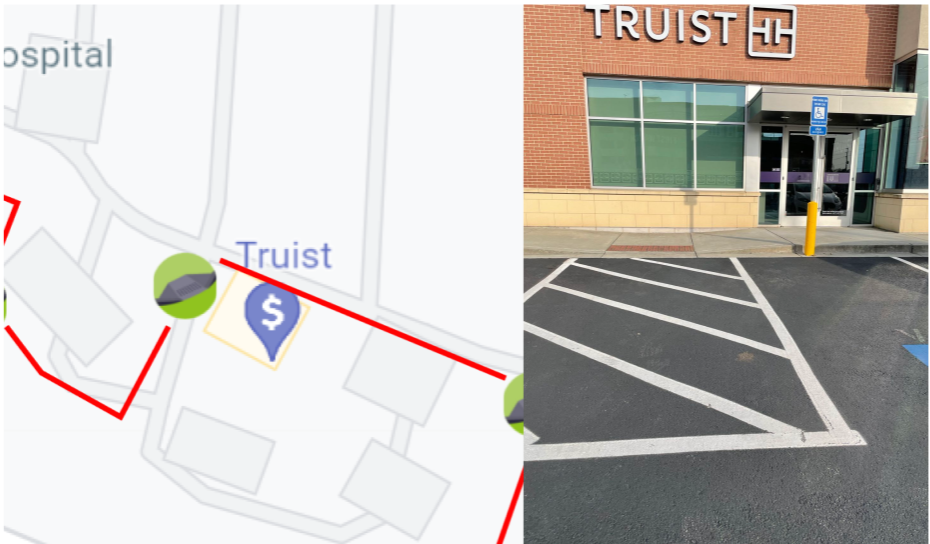
The first good accessible option is found at the entrance of the Truist building. There is a large disabled parking space in front of the building with a striped area that allows people with disability to go onto the sidewalk through the ramp and thus access the building.

The above picture shows the intersection of North Decatur Road and Church Street. The reason why I picked this location is that the curb ramp at this intersection is broad enough for people with wheelchairs to navigate even if there is a high traffic flow. Also, the slope of the curb ramp is very friendly, which does not pose challenges for disabled people to go through.
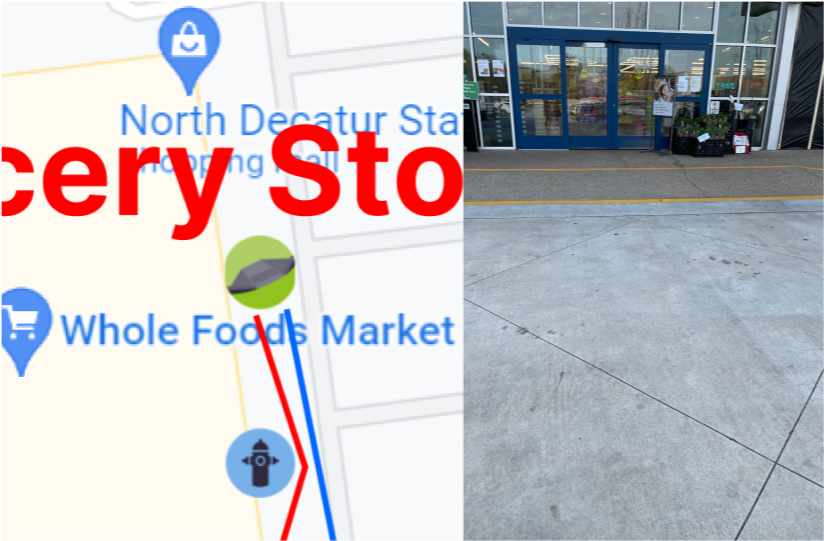
This picture was taken in front of my destination, Whole Foods Market. It is great that grocery stores like Whole Food provide a large sloped area in front of their entrance. People with wheelchairs can easily move onto the sidewalk and enter the store.
Problematic Areas
During the investigation, I found various disappointing and unfriendly designs for people with mobility impairment. So I just list a few here.
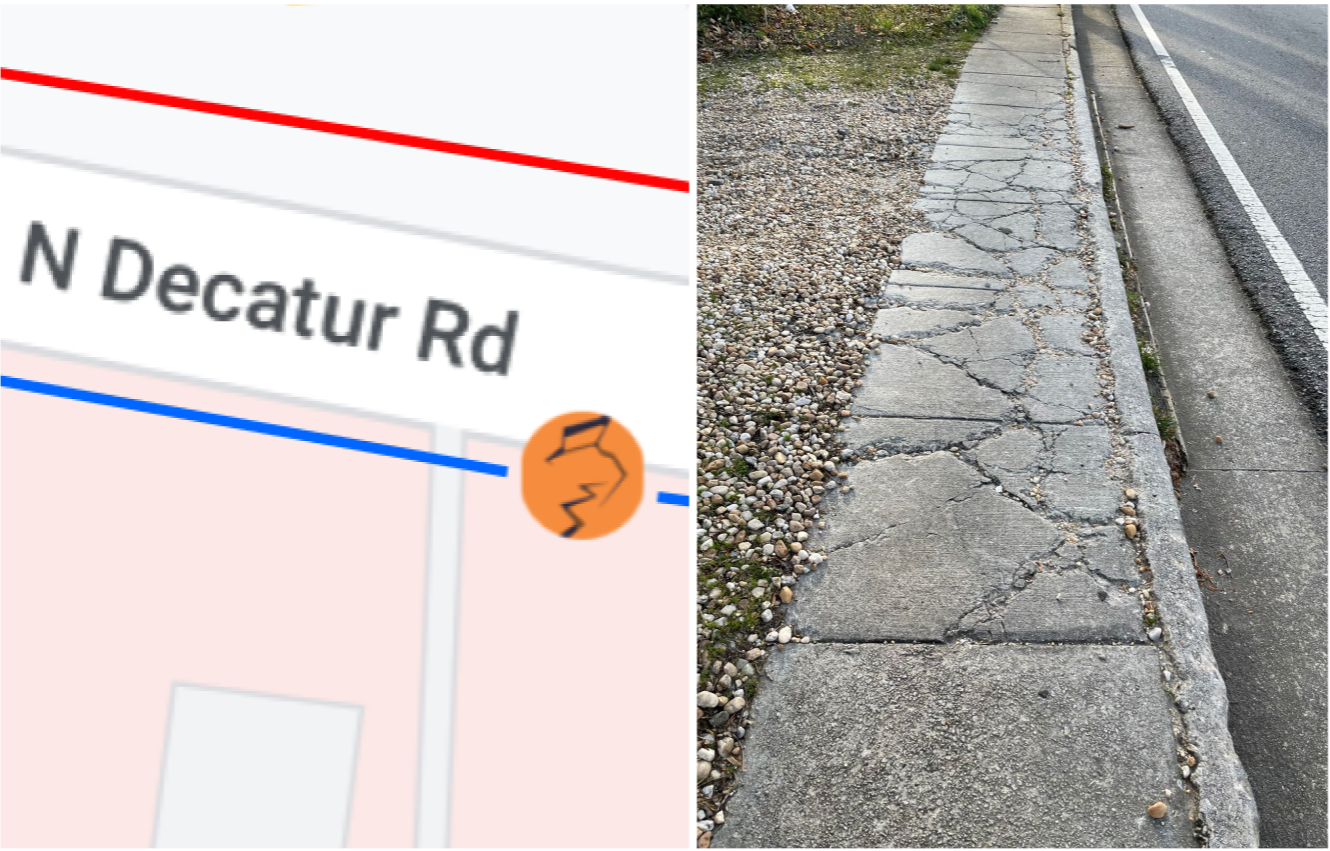
The picture above is a part of the sidewalk near the Whole Foods Market. As we can see, the road condition is really bad. All the cracks and stones on the surface would lead to an extremely uncomfortable experience for anyone that uses a wheelchair. And the sidewalk is too narrow, the wheelchair cannot even rotate.
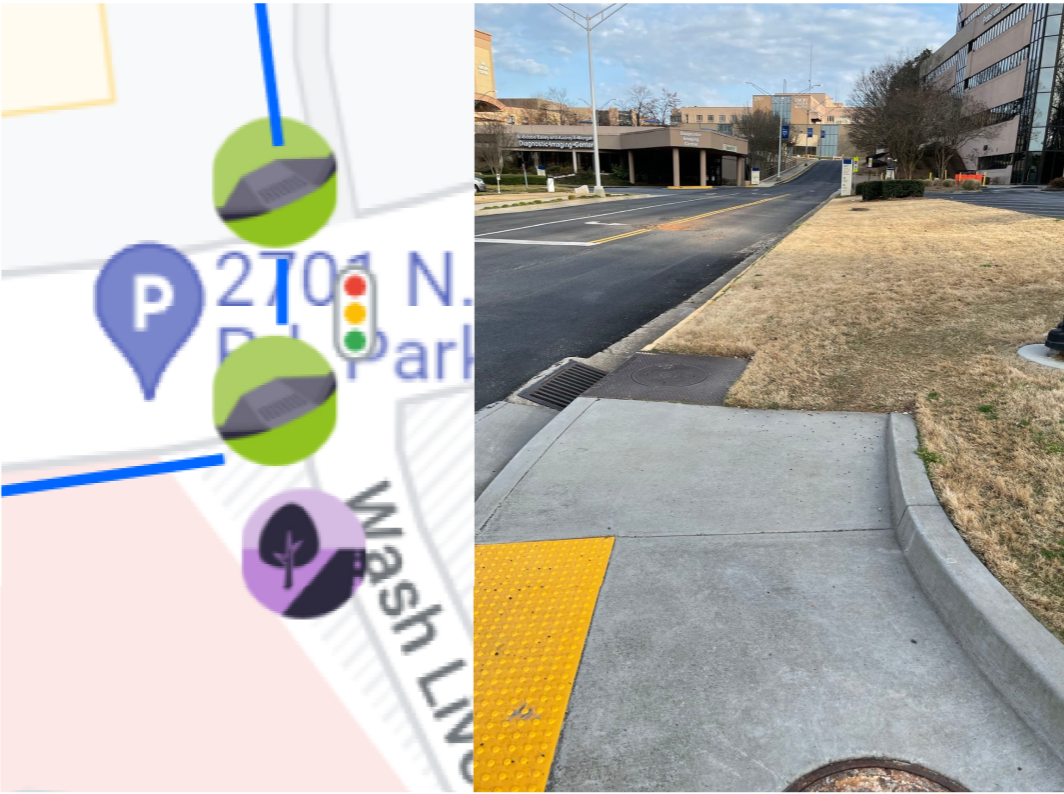
This picture provides another bad example. As shown in the picture, the sidewalk ends abruptly and there is no alternative way on this side of the road. The only option is to go across the grass area, which is difficult for people with mobility impairment.

The last example I chose is labeled as Not Passable. The only option passengers have to go to the next sidewalk is the stairs. Otherwise, passengers will have to walk on the street. Hence, it is dangerous for people with mobility impairment to go through this location.
Reflection
This assignment provides a great opportunity for me to better understand the urgency and importance of the accessibility design for people with mobility impairment.
References
[1]https://www.census.gov/newsroom/releases/archives/miscellaneous/cb12-134.html